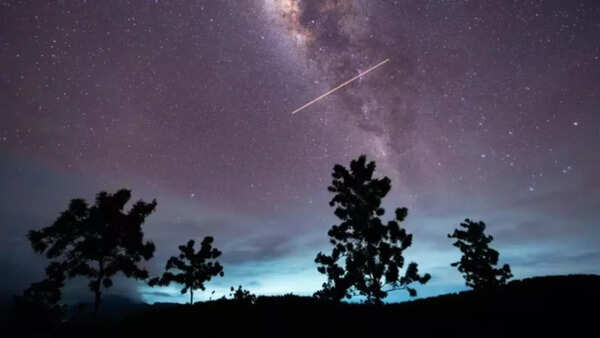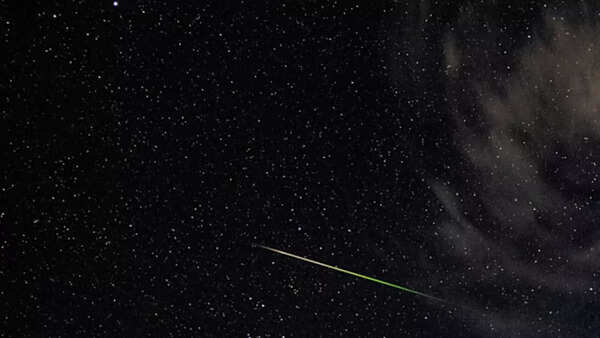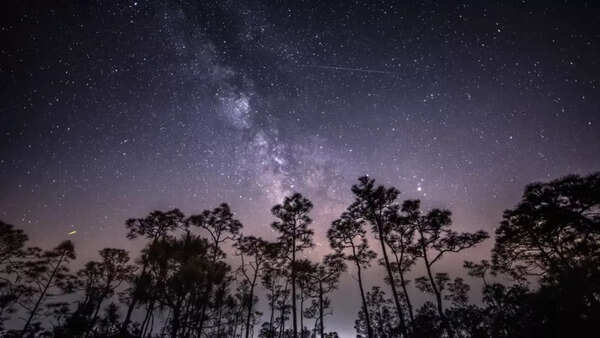One of the most popular comets, Halley’s comet, which swings by near Earth every 75 years, isn’t due for seeing until sometime around 2061, but is already back in the news again! Why? Because the debris left by the comet leads to two major meteor showers every year, including the Eta Aquarids.
And this time, the Eta Aquarid is set to return just after the glamorous affair at the Met Gala on May 5, Monday.
The Eta Aquarid meteor shower is set to peak on the morning of May 6, Tuesday, bringing with it a cosmic light show as ‘shooting stars‘ (and potentially dazzling fireballs) could burst to life above our heads.
Want to know more? Read on!
What is the Eta Aquarid meteor shower?
Taking place annually, the Eta Aquarid shower occurs when Earth passes through debris left behind by Halley’s comet. It lasts for around three weeks between mid-April and the end of May.
This year, the Eta Aquarid shower is slated to peak on the nights of May 5 and May 6, according to NASA, during which well-placed stargazers could see up to 50 meteors per hour pass swiftly across the sky.
While May 5-6 represents the peak of activity, the Eta Aquarid shower has technically been active since April 20 and is supposed to stay visible through to May 28.

What is a meteor shower?
A meteor shower is a celestial event where numerous meteors, streaks of light in the night sky, appear to originate from a single point in the sky called the radiant. These meteors are caused by tiny space rocks, called meteoroids, that burn up in Earth’s atmosphere as they enter at high speeds. Meteor showers occur when the Earth passes through the debris trails left by comets or asteroids, creating a visual display of meteors.
While meteors are tiny pieces of space debris, ranging in size from dust grains to small rocks, that enter Earth’s atmosphere, meteoroid is the term for space rocks before they enter the atmosphere and become meteors.
In the case of the Eta Aquarid meteor shower, the meteors will appear to be coming from a patch of sky, known as a radiant, located in the constellation Aquarius.
Why the Eta Aquarid meteor shower will have debris from Halley’s comet?
Meteor showers occur when Earth passes through trails of debris left by comets or asteroids. The source for the Eta Aquarids is Halley’s Comet. Since this debris enters the atmosphere at high velocities, it gets heated and burns up due to friction with the air.

Where the Eta Aquarid meteor shower will be visible?
The Eta Aquarid shower can be seen anywhere around the world, as long as you aren’t at extreme northern or southern latitudes.
This equatorial constellation is particularly high for stargazers in the Southern Hemisphere at this time of year, allowing them to catch the greatest number of meteors.
For viewers in the Northern Hemisphere, the shower is best viewed during the pre-dawn hours, when the radiant will rise along with Aquarius in the eastern sky. During this time, viewers in New York, for example, could expect to see around 10 meteors per hour. However, Aquarius will be low on the eastern horizon for mid-northern latitudes, making it somewhat difficult to spot.

How to watch the Eta Aquarid meteor shower?
The best time to watch a meteor shower is in the early predawn hours when the moon is low in the sky. To catch a glimpse of the Eta Aquarid meteor shower, you should head outside between midnight and dawn and avoid areas where there is significant light pollution. You won’t need binoculars or a telescope, as this shower will be visible with the naked eye. However, it will take around 15-20 minutes for your eyes to adapt, so patience literally is your currency here!






